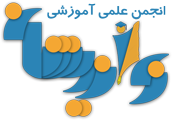جستجو در تالارهای گفتگو
در حال نمایش نتایج برای برچسب های 'fascia'.
1 نتیجه پیدا شد
-
[h=1]Fascia[/h] Not to be confused with fassia, fuchsia, or fascism. For other uses, see Fascia (disambiguation). [TABLE=class: infobox, width: 22] [TR] [TH=bgcolor: dimgray, colspan: 2, align: center]Fascia[/TH] [/TR] [TR] [TD=colspan: 2, align: center][/TD] [/TR] [TR] [TD=colspan: 2, align: center]The rectus sheath, an example of a fascia.[/TD] [/TR] [TR] [TH]Latin[/TH] [TD]fascia[/TD] [/TR] [TR] [TH]Gray's[/TH] [TD]subject #104 376[/TD] [/TR] [TR] [TH]Precursor[/TH] [TD]mesenchyme[/TD] [/TR] [TR] [TH]MeSH[/TH] [TD]Fascia[/TD] [/TR] [/TABLE] A fascia (pronounced /ˈfæʃiə/, US dict: făsh′ · ē · ə, plural fas·ci·ae /ˈfæʃɨ.iː/ US dict: făsh′ · ē · ē, adjective fascial; from latin: "band") is a layer of fibrous tissue[1] that permeates the human body. A fascia is a connective tissue that surrounds muscles, groups of muscles, blood vessels, and nerves, binding those structures together in much the same manner as plastic wrap can be used to hold the contents of sandwiches together.[2] It consists of several layers: a superficial fascia, a deep fascia, and a subserous (or visceral) fascia and extends uninterrupted from the head to the tip of the toes.[3] Like ligaments, aponeuroses, and tendons, fasciae are dense regular connective tissues, containing closely packed bundles of collagen fibers oriented in a wavy pattern parallel to the direction of pull. Fasciae are consequently flexible structures able to resist great unidirectional tension forces until the wavy pattern of fibers has been straightened out by the pulling force. These collagen fibers are produced by the fibroblasts located within the fascia.[2] [TABLE=class: toc] [TR] [TD] [h=2]Contents[/h] [hide] 1 Definition 2 Function 3 See also 4 References 5 External links [/TD] [/TR] [/TABLE] [h=2]Definition[/h] There exists some controversy about what structures are considered "fascia", and how fascia should be classified.[4] The two most common systems are: the one specified in the 1983 edition of Nomina Anatomica (NA 1983) the one specified in the 1997 edition of Terminologia Anatomica (TA 1997) [TABLE=class: wikitable] [TR] [TH]NA 1983[/TH] [TH]TA 1997[/TH] [TH]Description[/TH] [TH]Example[/TH] [/TR] [TR] [TD]Superficial fascia[/TD] [TD](not considered fascia in this system)[/TD] [TD]This is found in the subcutis in most regions of the body, blending with the reticular layer of the dermis.[5][/TD] [TD]Fascia of Scarpa[/TD] [/TR] [TR] [TD]Deep fascia[/TD] [TD]Fascia of muscles[/TD] [TD]This is the dense fibrous connective tissue that interpenetrates and surrounds the muscles, bones, nerves and blood vessels of the body.[/TD] [TD]Transversalis fascia[/TD] [/TR] [TR] [TD]Visceral fascia[/TD] [TD]Visceral fascia, parietal fascia[/TD] [TD]This suspends the organs within their cavities and wraps them in layers of connective tissue membranes.[/TD] [TD]Pericardium[/TD] [/TR] [/TABLE] [h=2]Function[/h] Fasciae are normally thought of as passive structures that transmit mechanical tension generated by muscular activities or external forces throughout the body. Some research suggest that fasciae might be able to contract independently and thus actively influence muscle dynamics.[6] The function of muscle fasciae is to reduce friction to minimize the reduction of muscular force. In doing so, fasciae allow muscles to glide over each other.[7
